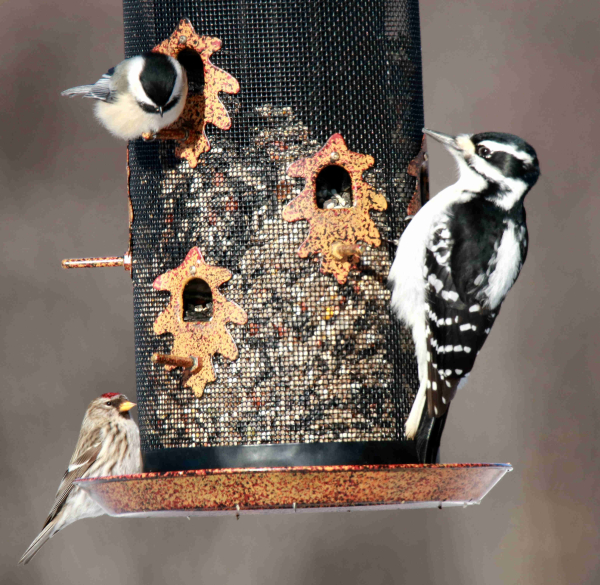DNR check station staff hunting valuable deer data
Most Michigan deer hunters have been in the woods as much as possible during this firearm deer hunting season.
However, one group of deer hunters — members of the Michigan Department of Natural Resources’ Wildlife Division — have given up some of their days afield to check other hunters’ deer at check stations around the state.
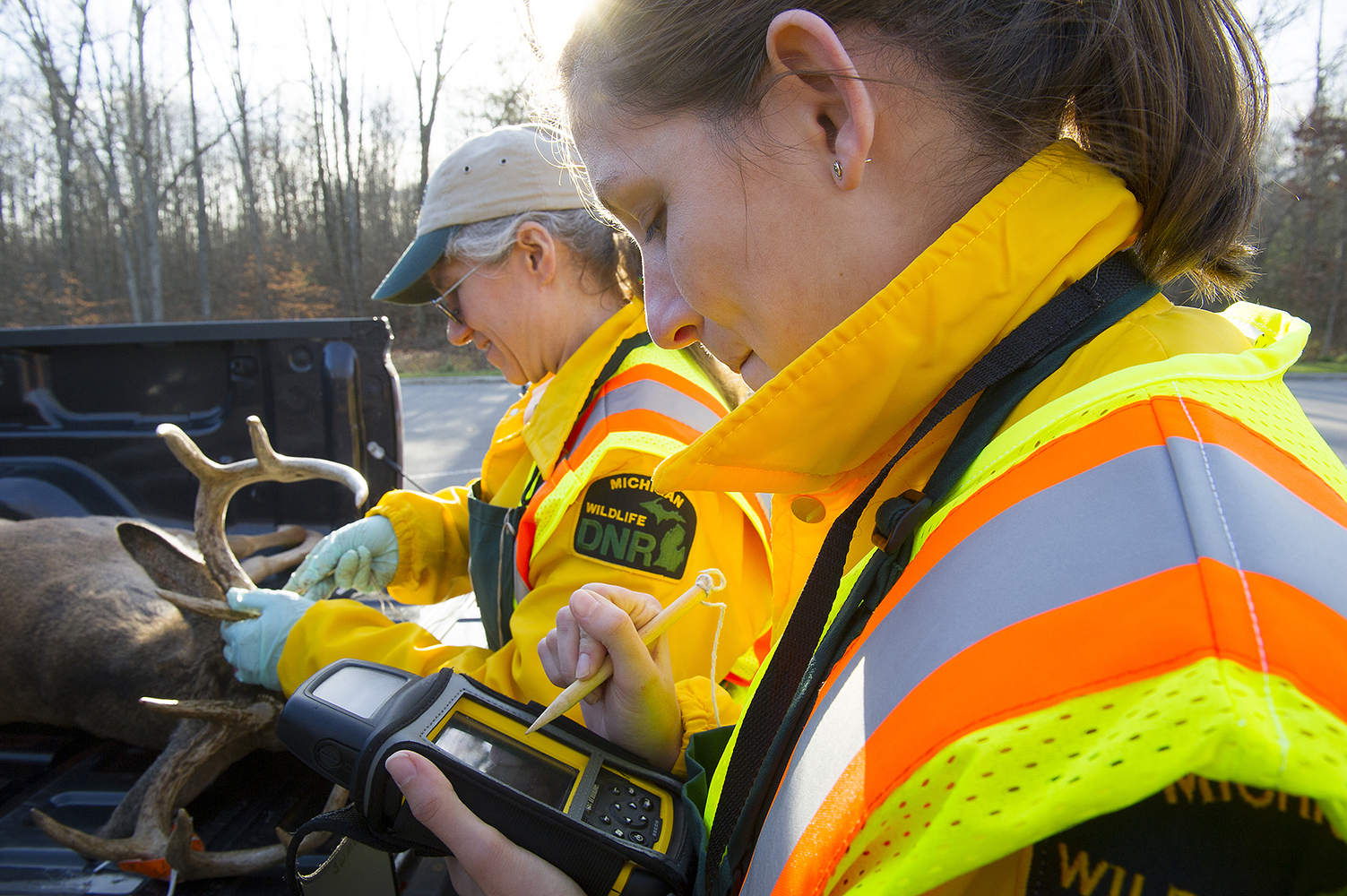 Collecting valuable data about the state’s deer population is something the DNR has been doing for decades.
Collecting valuable data about the state’s deer population is something the DNR has been doing for decades.
The DNR is aided in its efforts by students and other volunteers and through partnerships with meat processors, taverns, recreation vehicle dealers and other businesses that provide some of the most popular check station venues.
“We get a ton of information from our hunters,” said Chad Stewart, the DNR’s deer specialist, who is located at the Rose Lake Research Center. “It’s the one time of year when we can really get our hands on so many deer.”
The DNR collects data on the age and sex structure of the harvest, location data from where the deer are being taken and a glimpse of the herd’s overall health.
“We get a lot of data at the township-range-section level,” Stewart said. “Any one data point doesn’t have much value. But, when you get that same data over time, it has a far greater impact. We’re able to tell where these deer came from and anything that changes over time regarding any of the factors we’re looking at.”
Across Michigan, from Wakefield in the western Upper Peninsula, to the Mackinac Bridge and south to the Point Mouillee State Game Area in Rockwood, the DNR runs check stations at a number of highway rest areas as well as at almost all DNR field offices, at many deer processors, even some restaurants.
“Our field staffers have good ideas of what makes a good deer check station,” Stewart said. “A lot of it’s historical — we go back to the same places year after year after year.”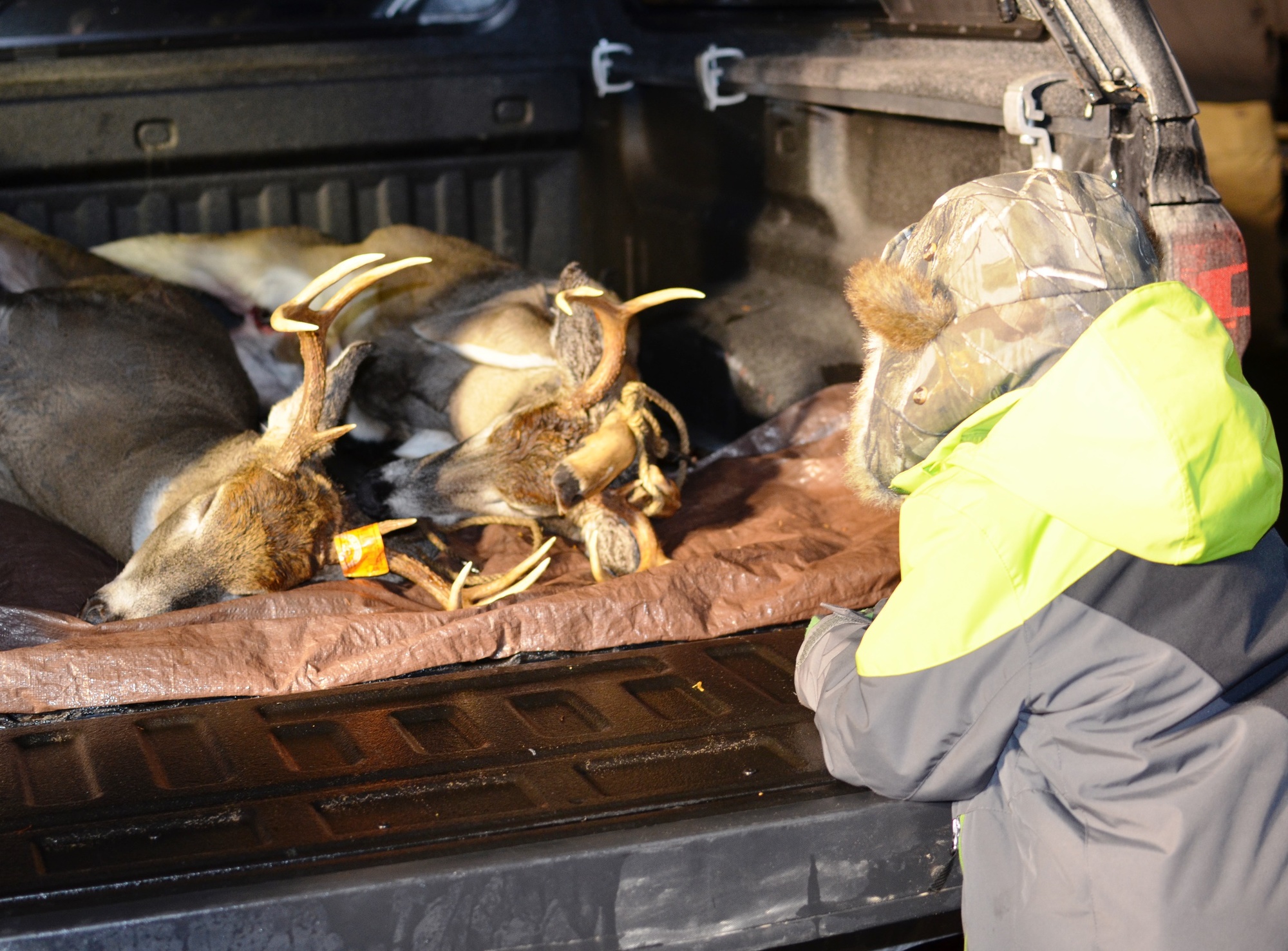
Vicki Brown, an analyst in the DNR Wildlife Division in Lansing — and a deer hunter — spent part of this week working at a rest area check station along Interstate 75 at Clio. She said she really likes working there.
“You get a diversity of people coming through here, not just from one or two counties,” Brown said. “You get to see a lot of hunters and you get to hear their stories.”
One of the stories Brown heard was from Jay Gleeson, a 50-year-old engineer from Lapeer, who killed an 8-point buck in Clare County.
Gleeson said it was his first deer season hunting since his father passed away. He’d hunted with his dad for 36 years.
He said he shot his 2 ½-year-old deer in honor of his dad.
“I usually let bucks like this go — we try to shoot deer that are 3 ½ or older — but I shot him with my dad’s rifle and I used his knife to dress him,” Gleeson said.
One hunter at the Marquette check station said the buck he shot had a rack on his head so big it “looked like a rocking chair.” At the Hilltop RV Superstore in Escanaba, a big group of hunters gathered to check their deer at the Nov. 18 “Deer Poll.”
The eyes of children widened getting close-up looks at so many big bucks. Hunters congregated at the tailgates of pickup trucks where they talked about the deer harvest and their bucks.
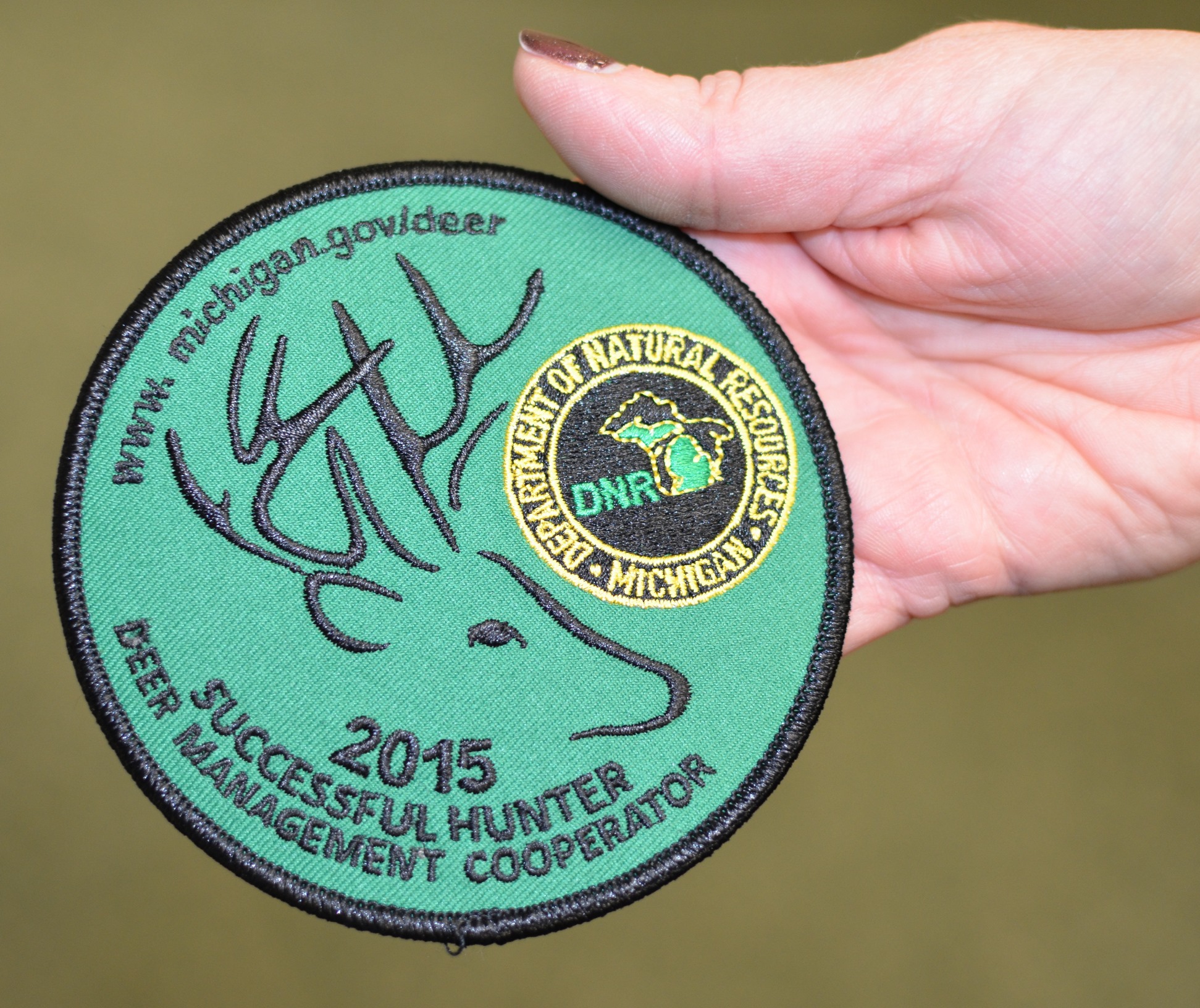 As an incentive for hunters to check their deer, those who do are rewarded with a Successful Hunter–Deer Management Cooperator patch.
As an incentive for hunters to check their deer, those who do are rewarded with a Successful Hunter–Deer Management Cooperator patch.
“That patch program is really popular,” Stewart said. “The patch program goes back to the early 1970s — they’ve become tremendous collector’s items and something that people really relish — they really want to get their patch.”
That was one of the reasons Gabriel Dunsmore brought his deer into the Clio check station. The 25-year-old, who took his first deer this year after nine seasons of hunting, said he wanted to show off a little bit and get the patch.
The patch is what brought Jay Sheher, a 55-year-old engineer, to the check station with his 3 ½-year-old 8-point buck.
“Really it was the only reason,” he said. “My son got a deer but he didn’t get to get a patch, so I’m going to give him this one.”
Stewart said the DNR puts tremendous effort into checking deer because of the great deal of valuable information it gets in return.
“We typically check around 4 or 5 percent of our harvest — most other states are only checking 2 or 3 percent of their harvest,” said Stewart, who has been working at check stations in Mio and in the Lansing area this year.
One prime indicator of health in deer, especially yearlings, is beam diameter measured at the check stations.
“We measure the beam diameter at the base of the skull. The greater the diameter, the greater the fitness,” Stewart said. “A deer devotes enough energy and resources to survival, and if it meets that requirement, then it goes into reproductive fitness. If it reaches that level, then it puts its energy into its antler development. Generally the more energy it puts into its antlers, the more fit that animal is.”
Beam diameter also tells biologists how well deer are responding to their habitat.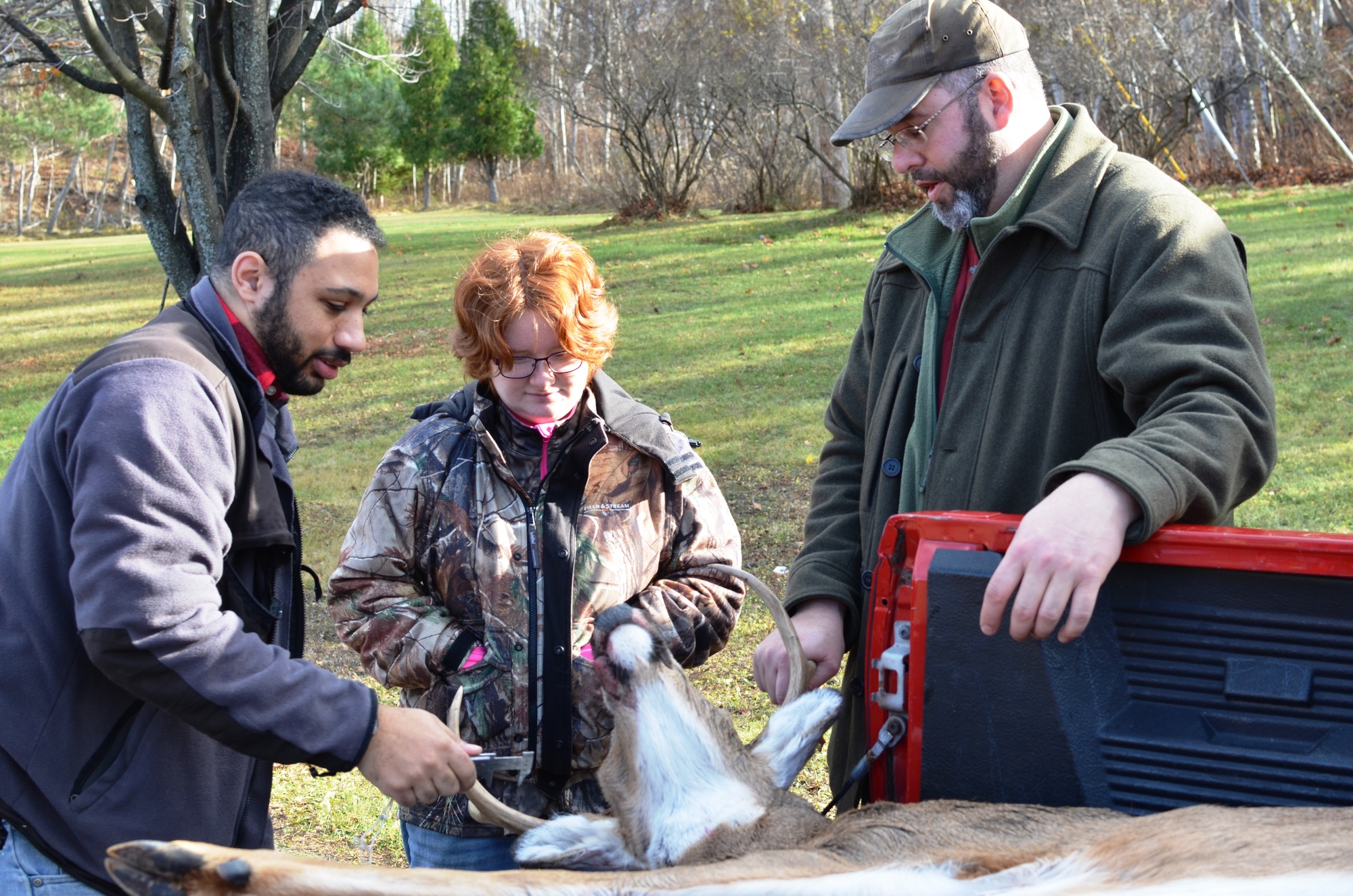
“In southern Michigan, the average beam diameter is larger than it is in the U.P.,” Stewart said. “That makes sense. They have better quality habitat. They’re able to consume more calories — they’re living on agricultural crops for the most part — so they’re usually more fit the first year and moving forward.
Check stations also provide an opportunity for biologists to get disease samples.
“We’ve got that going on in Meridian Township (Ingham County) where we found chronic wasting disease (CWD) — we’ve got three check stations and that’s the only mandatory check area in the state,” Stewart said. “And we’re getting samples from the northeast Lower Peninsula where we’re monitoring bovine tuberculosis.”
Many hunters say they appreciate the effort the DNR puts into checking deer and analyzing the health and other dynamics of the herd.
Tracy Hickmott, a 54-year-old route salesman said he brought his deer in to be checked because “I feel like it’s my responsibility.”
Gleeson said he felt the same way.
“I’m interested in helping the DNR manage the herd,” he said.
The DNR continues to check deer into January, after the close of the firearm, muzzleloader and late archery deer hunting seasons.
“We work with several groups after the (firearm deer hunting) season to have jaw-aging nights,” Stewart said. “So we continue to collect data after the fact.”
The DNR has an online map pinpointing the locations of deer check stations throughout the state and hours of operation. Hunters also are urged to call ahead whenever possible to confirm hours and days of operation.


